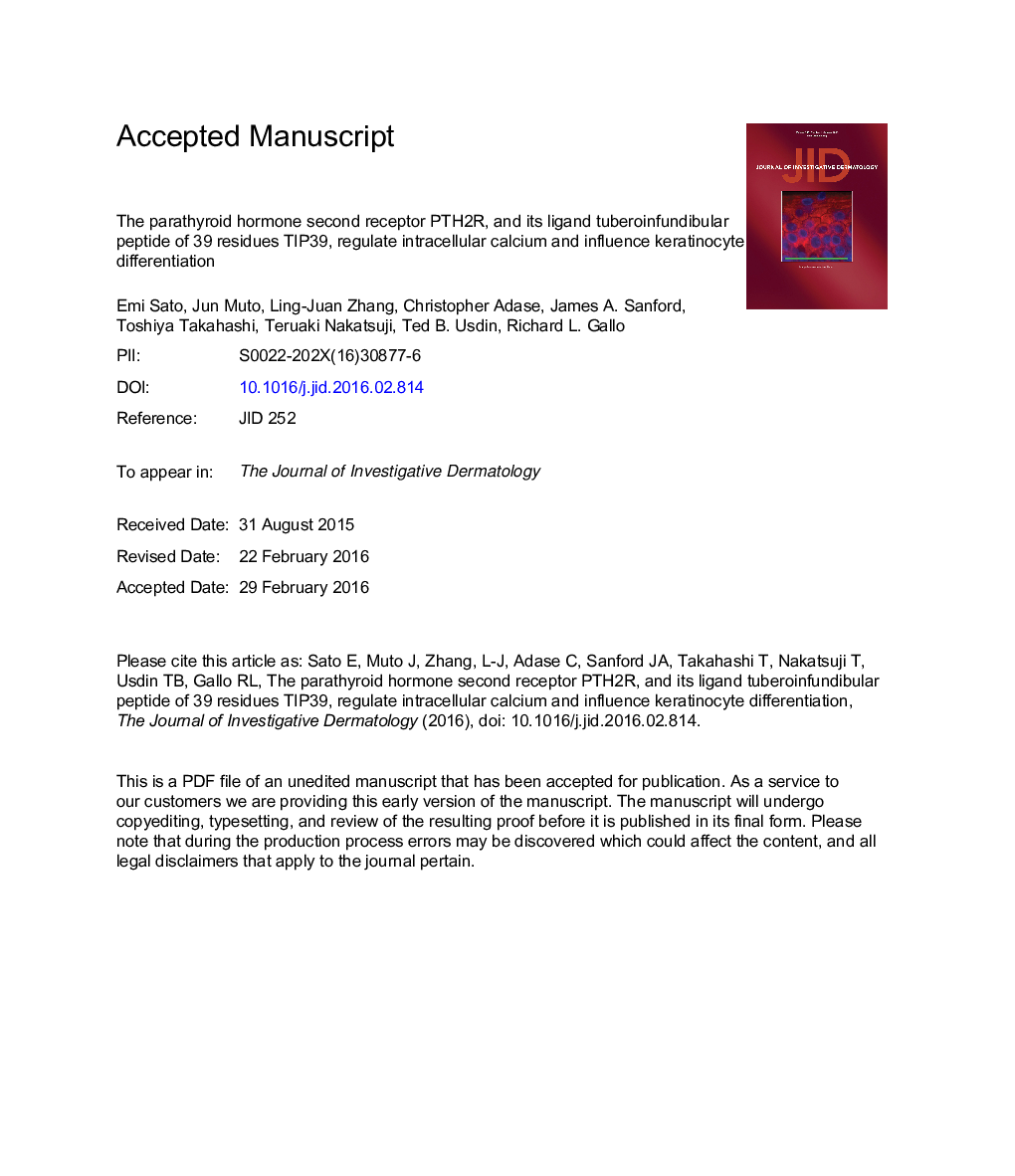| Article ID | Journal | Published Year | Pages | File Type |
|---|---|---|---|---|
| 6074356 | Journal of Investigative Dermatology | 2016 | 41 Pages |
Abstract
Genes related to the parathyroid hormone (PTH) influence cutaneous immune defense and development, but the full functions of the PTH family in cutaneous biology remain incompletely understood. In this study, we examined the expression and potential functions of the PTH second receptor (PTH2R) and its ligand, the tuberoinfundibular peptide of 39 residues (TIP39), in the skin. TIP39 and PTH2R mRNA and protein were detectable in both human and mouse skin, and in cultured keratinocytes and adipocytes. TIP39 was observed in the basal layer of human skin, whereas PTH2R was detected in the spinous to granular layer. The subcellular localization of TIP39 in keratinocytes changed during calcium-induced differentiation and shifted to colocalize with PTH2R at the membrane. The addition of recombinant TIP39 to normal human keratinocytes in culture induced an increase in intercellular calcium and triggered aspects of terminal differentiation including decreased keratin-14 and increased involucrin expression. Consistent with these observations, PTH2Râ/â mice were observed to have increased epidermal thickness. In summary, identification of TIP39 and its receptor in the epidermis reveals an additional PTH family member that is expressed in the skin and may influence keratinocyte function.
Keywords
Related Topics
Health Sciences
Medicine and Dentistry
Dermatology
Authors
Emi Sato, Jun Muto, Ling-Juan Zhang, Christopher A. Adase, James A. Sanford, Toshiya Takahashi, Teruaki Nakatsuji, Ted B. Usdin, Richard L. Gallo,
